
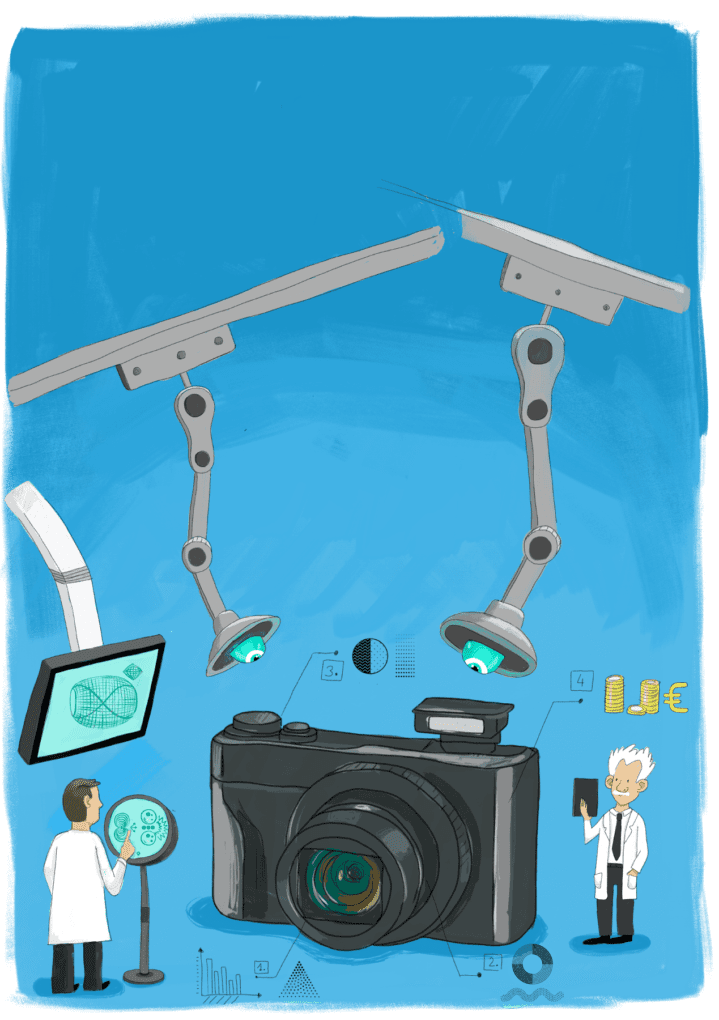
We carried out a large survey between 19th and 24th April 2023, amongst 1,212 people who had gone on a long trip. We asked them many questions about the devices they used to take their photos. Learn more about our methodology
A12% of long-term travellers took a compact camera.
The most used compact camera brands by RTW travellers are:
We compared the most used micro 4/3 and APC-C compact camera models by long term travelers.
|
Fujifilm X100V |
Panasonic Lumix LX100 Mark II |
||
|---|---|---|---|
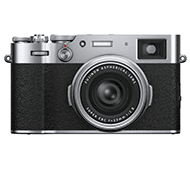
|

|
||
|
BUY
|
|||
| Price | $1,800 | $1,300 | |
| Buy | Amazon | Amazon | |
|
OUR SURVEY
|
|||
|
These ratings are based on the evaluation at the time of the camera’s release. For older devices, the score may be slightly inflated due to the technological advancements of competing devices. Average rating from 13 specialised websites (out of 10) See all ratings |
8 | 3 | |
| Average rating from 13 specialised websites (out of 10) | |||
| Release year | 2020 | 2018 | |
|
SENSOR
|
|||
| Sensor size (mm) | 23.5 x 15.6 mm | 17.3 x 13 mm | |
| Number of megapixels | 26 Mpx | 17 Mpx | |
| Sensibilité : plage ISO native | 160 – 12800 | 200 – 25600 | |
| Sensitivity : native ISO range | 80 – 51,200 | 100 – 25,600 | |
|
LENS
|
|||
| Focal length (35 mm equivalent) | 35 mm fixed focal length | 24–75 mm | |
| Maximum aperture | f/2–16 | f/1.7–2.8 | |
| Optical zoom | No | 3.1x | |
|
AUTOFOCUS
|
|||
| Contrast detection | |||
| Phase detection | |||
| Number of focus points | 425 | 49 | |
|
SHUTTER SPEED
|
|||
| Mechanical shutter speed | 1/4,000 – 30 s | 1/4,000 – 60 s | |
| Maximum mechanical burst speed at full resolution | 11 fps | 11 fps | |
|
VIDEO
|
|||
| Video size | 4K | 4K | |
| Video: maximum size (pixels) and frame rate (fps) |
4,096×2,160 / 30 fps 1,920×1,080 / 120 fps |
3,840×2,160 / 30 fps 1,920×1,080 / 60 fps |
|
|
VIEWFINDER
|
|||
| Type | Electronic and optical | Electronic | |
| Number of points | 3,690,000 | 2,760,000 | |
|
SCREEN
|
|||
| Size | 7.6 cm | 7.6 cm | |
| Number of dots | 1,620,000 | 1,240,000 | |
| Touch screen | |||
| Screen type | Tilting | Fixed | |
|
CONNECTIVITY
|
|||
| WiFi | |||
| NFC | |||
| Bluetooth | |||
| GPS | |||
| Microphone input | |||
| USB | USB 3.2 Gen 1 (5 GBit/sec) | USB 2.0 (480 Mbit/sec | |
|
STABILISATION
|
|||
| Stabilisation | Optical | ||
|
OTHER SPECIFICATIONS
|
|||
| Built-in flash | |||
| Battery life (CIPA) | 420 frames | 340 frames | |
|
PHYSICAL SPECS
|
|||
| Weight (CIPA) | 478 g | 392 g | |
| Dimensions | 128x75x53 mm | 115x66x64 mm | |
| Weather sealing | |||
| Shockproof | |||
|
BUY
|
|||
| Buy | Amazon | Amazon | |
We compared the most used 1″ compact camera models by long term travelers. We also included some cameras that are too recent to be included in our survey but are among the best sellers.
|
Sony RX100 Mark VII |
Sony RX100 Mark VI |
Panasonic Lumix ZS100 |
Canon G7 X Mark III |
Sony ZV-1 |
Sony ZV-1 Mark II |
Canon G5 X Mark II |
Panasonic Lumix ZS200 |
Panasonic Lumix LX10 |
||
|---|---|---|---|---|---|---|---|---|---|---|

|

|

|

|

|

|

|

|

|
||
|
BUY
|
||||||||||
| Price | $1,300 | $830 | $500 | $750 | $650 | $900 | $1,000 | $650 | $600 | |
| Buy | Amazon | Amazon | Amazon | Amazon | Amazon | Amazon | Amazon | Amazon | Amazon | |
|
OUR SURVEY
|
||||||||||
|
These ratings are based on the evaluation at the time of the camera’s release. For older devices, the score may be slightly inflated due to the technological advancements of competing devices. Average rating from 13 specialised websites (out of 10) See all ratings |
13 | 13 | 6 | 5 | 3 | 3 | 1 | 1 | 0 | |
| Average rating from 13 specialised websites (out of 10) | ||||||||||
| Release Year | 2019 | 2018 | 2016 | 2019 | 2020 | 2023 | 2019 | 2018 | 2016 | |
|
SENSOR
|
||||||||||
| Sensor size (mm) | 13.2 x 8.8 mm | 13.2 x 8.8 mm | 13.2 x 8.8 mm | 13.2 x 8.8 mm | 13.2 x 8.8 mm | 13.2 x 8.8 mm | 13.2 x 8.8 mm | 13.2 x 8.8 mm | 13.2 x 8.8 mm | |
| Number of megapixels | 20 Mpx | 20 Mpx | 19 Mpx | 20 Mpx | 20 Mpx | 21 Mpx | 20 Mpx | 20 Mpx | 21 Mpx | |
| Sensitivity : native ISO range | 125 – 12,800 | 126 – 12,800 | 125 – 12,800 | 125 – 12,800 | 125 – 12,800 | 125 – 12,800 | 125 – 12,800 | 125 – 12,800 | 126 – 12,800 | |
| Sensitivity : extended ISO range | 64 – 12,800 | 80 – 12,800 | 80 – 25,600 | 125 – 25,600 | 80 – 25,600 | 80 – 12,800 | 125 – 25,600 | 80 – 25,600 | 81 – 25,600 | |
|
LENS
|
||||||||||
| Focal length (35 mm equivalent) | 24 – 200 mm | 24 – 200 mm | 25 – 250 mm | 24 – 100 mm | 24 – 70 mm | 18 – 50 mm | 24 – 120 mm | 24 – 360 mm | 24 – 72 mm | |
| Maximum aperture | f/2.8–4.5 | f/2.8–4.6 | f/2.8–5.9 | f/1.8–2.8 | f/1.8–2.8 | f/1.8–4 | f/1.8–2.8 | f/3.3–6.4 | f/1.4–2.8 | |
| Optical zoom | 8.3× | 8.3× | 10x | 4.2× | 2.9x | 2x | 5x | 15x | 3x | |
|
AUTOFOCUS
|
||||||||||
| Contrast detection | ||||||||||
| Phase detection | ||||||||||
| Number of focus points | 357 | 315 | 49 | N/A | 315 | 315 | N/A | 49 | 49 | |
|
SHUTTER SPEED
|
||||||||||
| Mechanical shutter speed | 1/2,000 – 30 s | 1/2,000 – 30 s | 1/2,000 – 60 s | 1/2,000 – 30 s | 1/2,000 – 30 s | 1/2,000 – 30 s | 1/2,000 – 30 s | 1/2,000 – 60 s | 1/4,000 – 60 s | |
| Maximum mechanical burst speed | 90 fps | 24 fps | 10 fps | 30 fps | 24 fps | 25 fps | 30 fps | 10 fps | 10 fps | |
| VIDEO | ||||||||||
| Video size | 4K | 4K | 4K | 4K | 4K | 4K | 4K | 4K | 4K | |
| Video: maximum size (pixels) and frame rate (fps) |
3,840×2,160 / 30 fps 1,920×1,080 / 120 fps |
3,840×2,160 / 30 fps 1,920×1,080 / 120 fps |
3,840×2,160 / 30 fps 1,920×1,080 / 60 fps |
3,840×2,160 / 30 fps 1,920×1,080 / 60 fps |
3,840×2,160 / 30 fps 1,920×1,080 / 120 fps |
3840×2160 / 30 fps 1920×1080 / 120 fps |
3,840×2,160 / 30 fps 1,920×1,080 / 60 fps |
3,840×2,160 / 30 fps 1,920×1,080 / 60 fps |
3,840×2,160 / 30 fps 1,920×1,080 / 60 fps |
|
|
VIEWFINDER
|
||||||||||
| Type | Electronic | Electronic | Electronic | Electronic | Electronic | |||||
| Number of dots | 2,360,000 | 2,360,001 | 1,166,000 | – | – | – | 2,360,000 | 3,330,000 | – | |
|
SCREEN
|
||||||||||
| Size | 7.6 cm | 7.6 cm | 7.6 cm | 7.6 cm | 7.6 cm | 7.6 cm | 7.6 cm | 7.6 cm | 7.6 cm | |
| Number of dots | 921,000 | 1,228,800 | 1,040,000 | 1,040,000 | 922,000 | 923,000 | 2,040,000 | 1,240,000 | 1,040,000 | |
| Touch screen | ||||||||||
| Screen type | Tilting | Tilting | Fixed | Tilting | Fully articulated | Fully articulated | Tilting | Fixed | Tilting | |
|
CONNECTIVITY
|
||||||||||
| WiFi | ||||||||||
| NFC | ||||||||||
| Bluetooth | ||||||||||
| GPS | ||||||||||
| Microphone input | ||||||||||
| USB | USB 2.0 (480 Mbit/sec) | USB 2.0 (480 Mbit/sec) | USB 2.0 (480 Mbit/sec) | USB 3.2 Gen 1 (5 GBit/sec) | USB 2.0 (480 Mbit/sec) | USB 2.0 (480 Mbit/sec) | USB 3.2 Gen 1 (5 GBit/sec) | USB 2.0 (480 Mbit/sec) | USB 2.0 (480 Mbit/sec) | |
|
STABIISATION
|
||||||||||
| Stabilisation | Optical | Optical | Optical | Optical | Optical | Optical | Optical | Optical | Sensor | |
|
OTHER SPECIFICATIONS
|
||||||||||
| Built-in flash | ||||||||||
| Battery life (CIPA) | 260 frames | 240 frames | 300 frames | 235 frames | 260 frames | 290 frames | 230 frames | 370 frames | 260 frames | |
|
PHYSICAL SPECS
|
||||||||||
| Weight (CIPA) | 302 g | 301 g | 312 g | 304 g | 294 g | 292 g | 340 g | 340 g | 310 g | |
| Dimensions | 102x58x43 mm | 102x58x43 mm | 111x65x44 mm | 105x61x41 mm | 105x60x44 mm | 106x60x47 mm | 111x61x46 mm | 111x66x45 mm | 106x60x42 mm | |
| Weather sealing | ||||||||||
| Shockproof | ||||||||||
|
BUY
|
||||||||||
| Buy | Amazon | Amazon | Amazon | Amazon | Amazon | Amazon | Amazon | Amazon | Amazon | |
We compared the most used 1/2,3″ compact camera models by long term travelers. We also included some cameras that are too recent to be included in our survey but are among the best sellers.
|
Olympus Tough TG-6 |
Sony HX99 |
Canon PowerShot SX740 HS |
Panasonic Lumix ZS70 |
Panasonic Lumix ZS60 |
||||
|---|---|---|---|---|---|---|---|---|
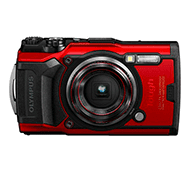
|

|

|
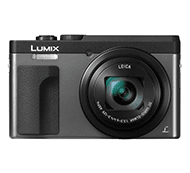
|
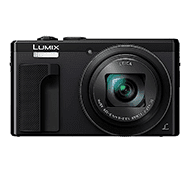
|
||||
|
Buy
|
||||||||
| Price | $500 | $470 | $550 | $400 | $350 | |||
| Buy | Amazon | Amazon | Amazon | Amazon | ||||
|
OUR SURVEY
|
||||||||
| Number of respondents who bought this series (including older models) | 11 | 11 | 6 | 2 | 2 | |||
|
These ratings are based on the evaluation at the time of the camera’s release. For older devices, the score may be slightly inflated due to the technological advancements of competing devices. Average rating from 13 specialised websites (out of 10) See all ratings |
||||||||
| Release Year | 2019 | 2018 | 2018 | 2017 | 2016 | |||
|
SENSOR
|
||||||||
| Sensor size (mm) | 6.17 x 4.55 mm | 6.17 x 4.55 mm | 6.17 x 4.55 mm | 6.17 x 4.55 mm | 6.17 x 4.55 mm | |||
| Number of megapixels | 12 Mpx | 18 Mpx | 21 Mpx | 20 Mpx | 18 Mpx | |||
| Sensitivity : native ISO range | 100 – 12,800 | 80 – 12,800 | 100 – 3,200 | 80 – 3,200 | 80 – 3,200 | |||
| Sensitivity : extended ISO range | 100 – 12,800 | 80 – 12,800 | 100 – 3,200 | 80 – 6,400 | 80 – 6,400 | |||
|
LENS
|
||||||||
| Focal length (35 mm equivalent) | 25 – 100 mm | 24 – 720 mm | 24 – 960 mm | 24 – 720 mm | 24 – 720 mm | |||
| Maximum aperture | f/2–4.9 | f/3.5–6.4 | f/3.3–6.9 | f/3.3–6.4 | f/3.3–6.4 | |||
| Optical zoom | 4x | 30× | 40x | 30x | 30x | |||
|
AUTOFOCUS
|
||||||||
| Contrast detection | ||||||||
| Phase detection | ||||||||
| Number of focus points | 25 | N/A | N/A | 49 | 49 | |||
|
SHUTTER SPEED
|
||||||||
| Mechanical shutter speed | 1/2,000 – 4 s | 1/2,000 – 30 s | 1/3,200 – 15 s | 1/2,000 – 4 s | 1/2,000 – 4 s | |||
| Maximum burst speed | 20 frames | 10 frames | 10 frames | 10 frames | 40 frames | |||
|
VIDEO
|
||||||||
| Video size | 4K | 4K | 4K | 4K | 4K | |||
| Video: maximum size (pixels) and frame rate (fps) |
3,840×2,160 / 30 fps 1,920×1,080 / 60 fps |
3,840×2,160 / 30 fps 1,920×1,080 / 60 fps |
3,840×2,160 / 30 fps 1,920×1,080 / 60 fps |
3,840×2,160 / 30 fps 1,920×1,080 / 60 fps |
3,840×2,160 / 30 fps 1,920×1,080 / 60 fps |
|||
|
VIEWFINDER
|
||||||||
| Type | Electronic | Electronic | Electronic | |||||
| Number of points | – | 638,400 | – | 1,166,000 | 1,166,000 | |||
|
SCREEN
|
||||||||
| Size | 7.6 cm | 7.6 cm | 7.6 cm | 7.6 cm | 7.6 cm | |||
| Number of points | 1,040,000 | 921,000 | 922,000 | 1,040,000 | 1,040,000 | |||
| Touch screen | ||||||||
| Screen type | Fixed | Tilting | Tilting | Tilting | Tilting | |||
|
CONNECTIVITY
|
||||||||
| WiFi | ||||||||
| NFC | ||||||||
| Bluetooth | ||||||||
| GPS | ||||||||
| Microphone input | ||||||||
| USB | USB 2.0 (480 Mbit/sec) | USB 2.0 (480 Mbit/sec) | USB 2.0 (480 Mbit/sec) | USB 2.0 (480 Mbit/sec) | USB 2.0 (480 Mbit/sec) | |||
|
STABILISATION
|
||||||||
| Stabilisation | Sensor | Optical | Optical | Optical | Optical | |||
|
OTHER SPECIFICATIONS
|
||||||||
| Built-in flash | ||||||||
| Battery life (CIPA) | 340 frames | 370 frames | 265 frames | 380 frames | 320 frames | |||
|
PHYSICAL SPECS
|
||||||||
| Weight (CIPA) | 253 g | 242 g | 299 g | 322 g | 282 g | |||
| Dimensions | 113x66x32 mm | 102x58x36 mm | 110x64x40 mm | 112x67x41 mm | 112x64x38 mm | |||
| Weather sealing | ||||||||
| Shockproof | ||||||||
|
BUY
|
||||||||
| Acheter | Amazon | Amazon | Amazon | Amazon | ||||
We aggregated the ratings given to compact cameras from 13 specialised websites. We converted them to a scale of 10 to calculate the average score. These ratings were given at the time of the camera’s release. For older cameras, the average score may be slightly inflated due to technological advancements.
| Model | Prix du boitier nu | Price (body only) | Average rating | Versus | Photo-graphy Blog | Camera Race | Digital Camera World | Amateur Photo-grapher | Tech Radar | Les Numé-riques | PCMag | DP Review | Camera Jabber | UFC Que Choisir | Cnet | Camera Labs |
|---|---|---|---|---|---|---|---|---|---|---|---|---|---|---|---|---|
| Fujifilm X100V | $1,800 | 2020 | 7.6 | 9 | 6.3 | 9 | 10 | 9 | 10 | 9 | 8.7 | 9 | 8.4 | – | 8 | |
| Sony RX100 Mark VI | $830 | 2018 | 6 | 9 | 5.8 | – | 9 | 9 | 8 | 8 | 8.3 | 10 | 8 | 8.8 | 9 | |
| Panasonic Lumix ZS200 | $650 | 2018 | 5.4 | 9 | 5,1 | 9 | – | 9 | 10 | 7 | 8.1 | 10 | 7.6 | 8.2 | 9 | |
| Sony RX100 Mark VII | $1,300 | 2019 | 5.1 | 10 | 6.6 | 8 | 9 | 9 | 8 | 8 | 8.5 | 8 | 7.9 | 8.6 | 8 | |
| Sony ZV-1 Mark II | $900 | 2023 | – | – | – | – | 9 | 8 | 8 | 7 | – | – | – | – | – | |
| Panasonic Lumix ZS100 | $500 | 2016 | 5.2 | 9 | 5.4 | – | 9 | 9 | 10 | 6 | 8.2 | – | 7.6 | 9 | 9 | |
| Sony ZV-1 | $650 | 2020 | 6.1 | 9 | 5.9 | 9 | 8 | 9 | 8 | 7 | 8.5 | 9 | – | 7.6 | – | |
| Panasonic Lumix LX100 Mark II | $1,300 | 2018 | 5 | 9 | 5.5 | 8.4 | 9 | 9 | 6 | 7 | 8.2 | 10 | 7.9 | 8.8 | 8 | |
| Canon G7 X Mark III | $750 | 2019 | 6.8 | 9 | 6.2 | 8 | – | 9 | 6 | 7 | 8.1 | 8 | 7.9 | – | 8 | |
| Canon G5 X Mark II | $1,000 | 2019 | 6.4 | 8 | 6.1 | 8 | 8 | 7.8 | 6 | 8 | 8.2 | 8 | 7.8 | 8.2 | 8 | |
| Olympus Tough TG-6 | $500 | 2019 | 5.4 | 8 | 5.2 | 9 | 8 | 8 | 8 | 8 | 7.6 | 8 | 6.5 | – | 8 | |
| Panasonic Lumix ZS70 | $400 | 2017 | 5.3 | 8 | 5.1 | 8 | – | 7 | 8 | – | 5.3 | 10 | 7.2 | – | 9 | |
| Panasonic Lumix LX10 | $600 | 2016 | 5.2 | 9 | 5.3 | 8 | 6 | 9 | 6 | – | 8.1 | – | 8 | 8 | – | |
| Panasonic Lumix ZS60 | $350 | 2016 | – | 8 | 5.6 | – | – | 7 | 10 | 8 | 4.7 | – | 7.3 | – | – | |
| Sony HX99 | $470 | 2018 | 5.9 | 9 | 5.5 | – | – | 8 | 8 | 6 | – | – | 6.7 | – | – | |
| Canon SX740 HS | $550 | 2018 | 5.8 | 8 | 3.3 | 7 | – | 7 | 6 | – | – | 6 | 6.8 | 5 | 8 |
The sensor is one of the most important parts of a camera. It converts light rays into electrical signals. A large sensor makes it possible to have a shallow depth of field (which in turn makes it possible to have a subject in focus and a blurred background) and offers better rendering in low or contrasting light.
The number of megapixels isn’t a determining factor when choosing a camera. All cameras sold today have enough megapixels to make satisfactory enlargements.
The higher the maximum ISO sensitivity, the more light the sensor can store and therefore take indoor photos without flash or photos of moving subjects.
On compact cameras, the lenses aren’t interchangeable.
The focal length of the lens determines how much your subject will be magnified. Its maximum aperture is stated in this way: f/number(s).
The smaller the f, the larger the aperture, allowing you to take photos in low light, without needing to increase the ISO sensitivity or use your flash.
Compact cameras are smaller and lighter than other cameras. With the lens, they weigh between 14.1 ounces and 2.2 pounds (400 grams and 1 kilo). The bigger your camera, the more it’ll weigh down your bag and attract unwanted attention, and the harder it’ll be to get out to capture scenes from everyday life.
Lots of compact cameras now shoot in 4K resolution (or UHD) which offers more detail, precision and clarity than shooting in Full HD. 4K also has the advantage of allowing you to crop. This is particularly useful for stabilising your image in the post-production editing process, since the software doesn’t need to insert pixels. But, be careful, as 4K requires a lot of storage space, as well as a high-performance computer if you plan on video editing.
The larger the rear screen and the number of megapixels, the easier it is to view photos and navigate. A rotatable screen also makes framing easier. A touch screen simplifies menu navigation and lets you scroll through photos, just like on a smartphone.
The higher the maximum shutter speed, the more blur-free photos you can take of moving subjects. However, the compact cameras that we compare here all have the same shutter speed: 1/2000s. Burst mode allows you to take several images in a row automatically. The higher the maximum burst speed, the more likely you are to get a good shot.
With optical stabilisation, it’s the lenses that move in the lens so that the image follows the movements of your camera. 5-axis stabilisation combines optical stabilisation with mechanical stabilisation in the sensor to compensate for five different movements. Electronic stabilisation is usually the least efficient.
Mirrorless cameras’ battery life is usually shorter than that on DSLRs. It varies a lot from one model to another. You could carry an extra battery and a portable charger to avoid running out of power. But, that’ll increase the weight of your gear.
Some compact cameras, like the Olympus Tough TG-6, are designed to withstand drops from a person’s height and to be able to take pictures underwater, which can come in handy if you’re diving or snorkelling when travelling.

